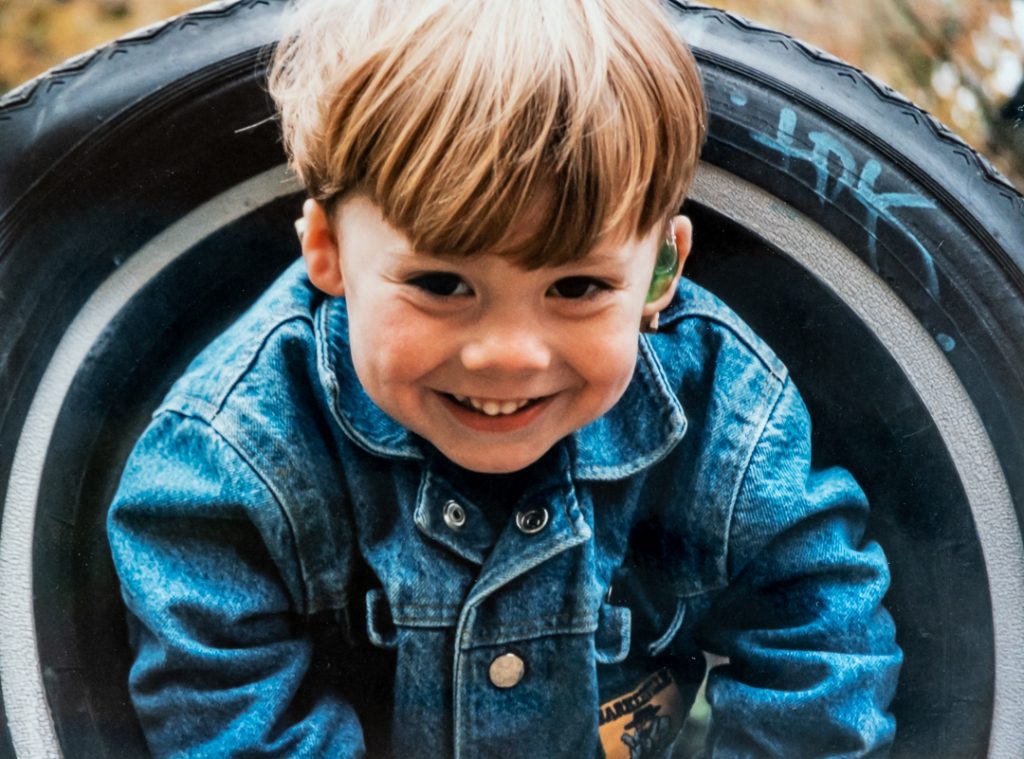Author: Teresa Kazemir
When our newborn son was identified as hard of hearing, one of the things we worried about was the possibility that he would be teased or bullied because of his hearing equipment or his small, differently-shaped ears. We learned a strategy early on that is referred to as ‘controlling the narrative’. This is a public relations skill that is often seen in the media – the desire to ‘get ahead of the story,’ or tell it your way before someone else tells it their way.
We wanted our son, Jesse, to develop strong self-esteem and identity, and did not want people expressing sympathy or pity for him. We also wanted to avoid a host of negative words and phrases such as:
- “What’s wrong with his ears?”
- “He can’t hear well.”
- “His ears are deformed.”
- “Oh, that’s too bad.”
- “Hearing impaired.”

We were amazed at how easy it was to set the tone for conversations with friends, family and even strangers. If we talked openly about our son’s ears, hearing access and equipment, using a matter-of-fact and accepting tone, we found that others seemed to relax and follow our lead. We also intentionally modeled the neutral or positive words and phrases that we wanted Jesse to grow up hearing:
- “His hearing aids help him hear.”
- “Sign language helps him understand.”
- “He hears best when you get down to his level and he can see your face.”
- “He was born with smaller ears that don’t have openings.”
- “Hard of hearing.”
As Jesse grew older, we saw him internalize the language that he heard around him and use it to answer questions and describe himself. We wanted to ensure this would continue as he became more independent and started spending more time away from us. When he started preschool, we created a photo picture book and added captions explaining about his hearing equipment. For kindergarten, we created a one-page brochure for teachers, again modeling the vocabulary and positive tone that we wanted teachers to use when talking about our son. The Teacher of the Deaf and Hard of Hearing led a circle time with his kindergarten class, again explaining about Jesse’s ears, hearing access and equipment. By educating the children in a positive and inclusive way it removed any stigma, and the children were given the appropriate vocabulary (and communication strategies) at an age when they are very accepting.
Over the years, I have seen many variations on these strategies. Some families create colourful brochures about their child to share with daycares, preschools or kindergarten (with endearing photos front and centre). Some write letters to the classmates’ parents, so they have accurate information and appropriate vocabulary to use when talking with their children. Others make a point of meeting with the school team and explaining explicitly what language they want to be used related to their child, and perhaps what terms or labels they want staff to avoid.
All of these strategies can be used effectively to influence how other people talk about our children and help to create a positive and accepting environment where our kids can grow and thrive.


